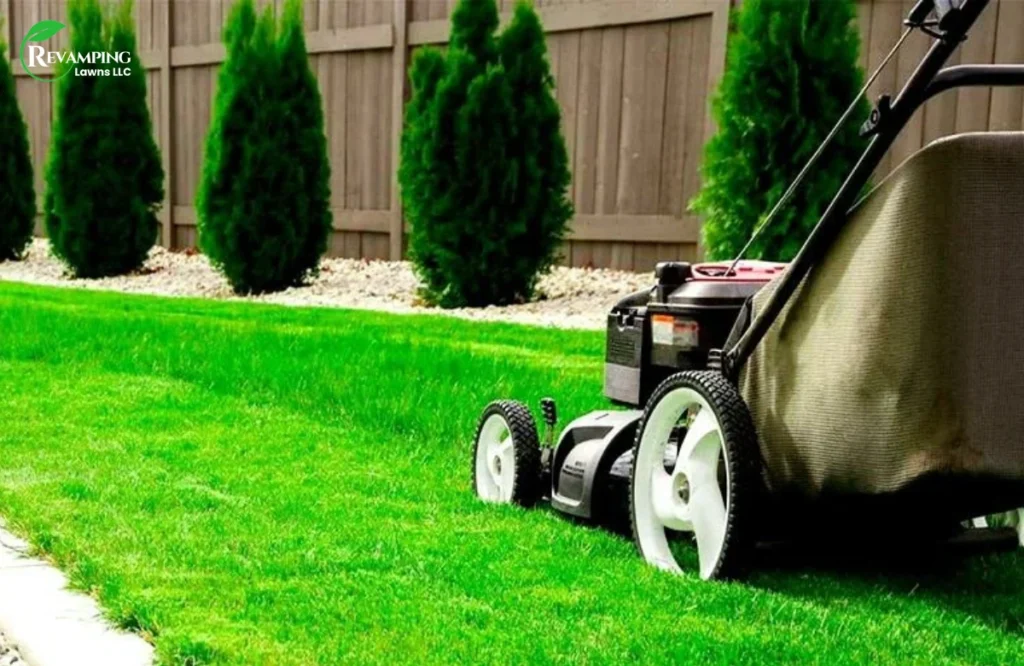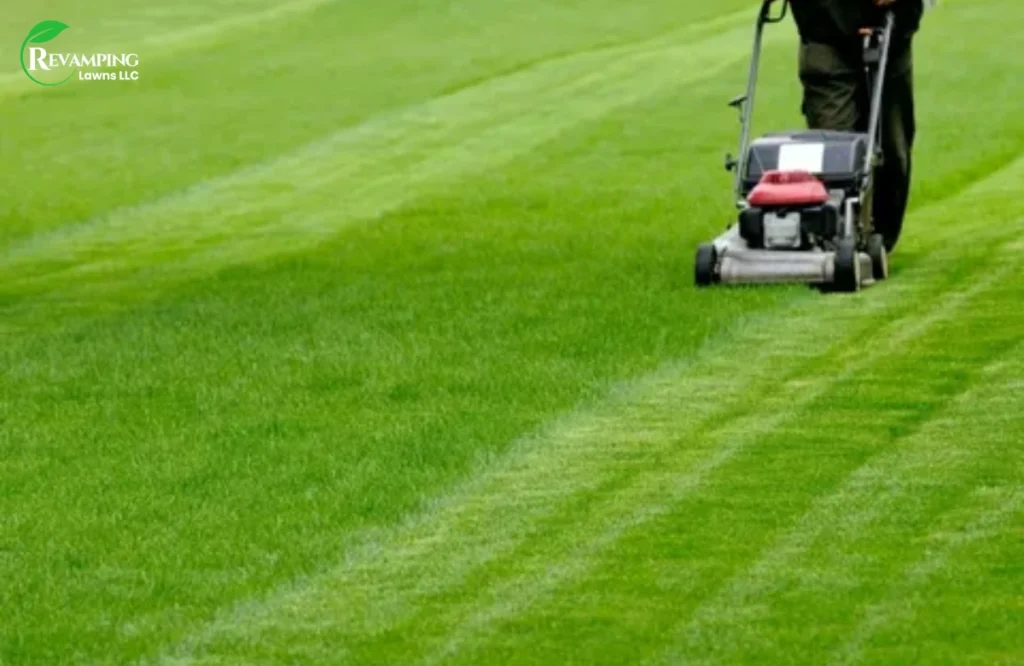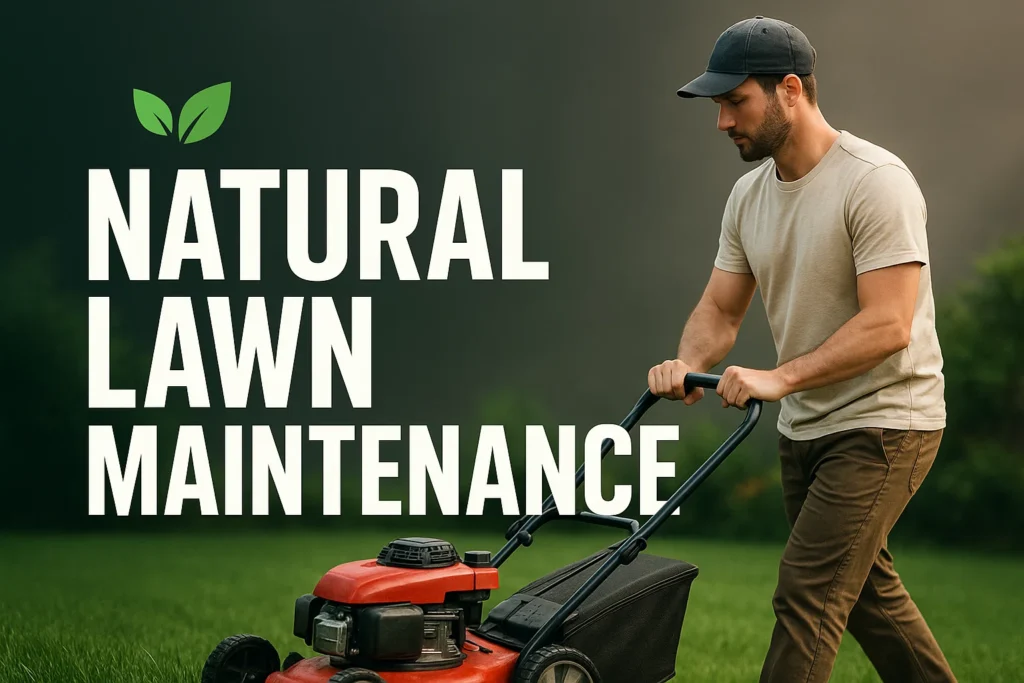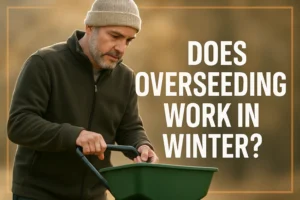Taking good care of the lawn and maintaining it naturally is not only possible but also a good thing for your family and the planet. The focus of natural lawn care is on the soil and the grass, which are nourished with safe and environmentally friendly methods that need less use of synthetic fertilizers and pesticides. This guide will assist you in taking good care of your lawn naturally, keeping it beautiful and vibrant all year round.
Simple Tips for Chemical-Free Lawn Maintenance
These simple tips focus on improving soil, mowing smartly, watering efficiently, and managing weeds and pests naturally for a beautiful, chemical-free yard.
Starting with Healthy Soil
A healthy soil is the base of a vigorous lawn, and groundwork with soil quality is an essential key when lawn care is done by natural means and without chemicals. First of all, check the pH level of your soil and the nutrients it contains, to get an understanding of its needs. Soil for the perfect lawn should be slightly acidic to neutral in terms of pH value, lying between 6.5 and 7.0.
Soil improvement is a must for the development of the grassroots. To accelerate soil nutrient levels and microbial diversity in the soil, apply compost, manure, or shredded leaves. Organic matter is critical in helping sandy soils retain water and making clay soil a little less compact and easier for roots to penetrate.
Pollution is the main reason why grass condition turns bad and aeration should be done frequently to reach deeper into the root zone. Soil hardening that resulted from regular traffic on the lawn is one of the major causes of a lack of grass quality.
You make a long-lasting base for a vibrant and extinction lawn by working and caring for the soil below with minimal synthetic chemicals. Better soil means better grass, almost invisible weed growth and a lawn that naturally harvests its season.
Natural Fertilization Methods
Truly feeding your lawn naturally is one of the most logical extensions of a chemical-free lawn care program. By using organic fertilizers, you not only feed the soil and the grass but also do it in a completely safe and sustainable way. While synthetic fertilizers can “shock” the soil and grass with the nutrients that they deliver very quickly and thus can kill the soil life, natural fertilizers provide nutrients slowly, letting the soil stay healthy in the long run.
Dung is the middle ground of organic fertilizers and it provides the soil with necessary micro-organisms that cohabitate with the plants. Compost tea, a liquid that is made by soaking compost in water, is used both as a nutrient injection for the lawn and as a moisturizing agent for the microbes. Other organic preparations include marine algae extracts, bone meal, seaweed, and manure-based products, providing valuable nutrients like nitrogen, phosphorus, and potassium.

Chemical-Free Pest and Disease Management
The first step in preventing pests and diseases is to care for the lawn properly to make it strong, hence giving it the ability to resist pests and diseases. Pests and diseases can be managed without the use of chemicals through the creation of a balanced and healthy lawn ecosystem. Healthy grass is naturally more resistant to pests and diseases, so the first step is proper lawn care—good soil, adequate watering, and correct mowing height help keep your lawn strong.
Attract and support the insects that are beneficial to you. These good bugs can be supported by planting flowers and herbs around your yard. These plants make a good habitat for the insects and also a source of food. For pest control, the use of natural products such as neem oil, insecticidal soap, and garlic spray, which are easy to apply and do not harm the environment, can be a good substitute for the use of harsh pesticides.
Mowing and Maintenance Without Chemicals
Proper mowing and regular maintenance play an important role in keeping a healthy lawn. They are even more effective when one decides not to use chemicals. Always keep the blades of your mower sharp so that a clean cut is made and the grass can heal faster, and also the chances of a disease are lowered. Set your mower to a higher blade height. This will not only shade the soil but also retain moisture and encourage deeper root growth.
Leaving grass clippings on the lawn, or grasscycling, is an excellent way of feeding the soil with the nutrients it needs naturally and thus lowering the need for fertilizers. Remove debris such as fallen leaves and twigs on a regular basis since they are the main causes of mold and pests.
Besides that, you can hand-pull the weeds, and if you have a dense and healthy lawn, it will become harder for the weeds to grow as they will have fewer places to occupy.
Seasonal Lawn Care Without Chemicals
Caring for your lawn with natural products all year round will keep it green and free of diseases. No chemicals will be used. Each season carries specific chores that will help the lawn grow and be resistant to diseases.
Spring: Break the season off with a thorough cleaning and aeration of the lawn to provide oxygen to the roots and relieve soil compaction. Add organic fertilizers to encourage the new growth and overseed with grass seed the bare areas of the lawn to get better lawn density. Mow more often than usual with a high blade and gradually start watering deeply if necessary.

Summer: The main goal of the summer period should be the conservation of moisture in the lawn through proper watering. Water early in the morning for deep penetration but avoid watering too often. Make sure mower blades are raised in order for the grass to be shaded and less stressed during hot periods. Always be on the lookout for bugs in your lawn and in case of an outbreak, treat it naturally with neem oil or insecticidal soap. Heavy foot traffic at hot, dry times should be avoided so that the lawn is not damaged.
Fall: Aeration and overseeding from today onwards can become your new program to repair and renew the lawn damaged by hot and dry summers. Apply the last organic fertilizer for the year to encourage root growth during winter. Mowing should continue until the grass stops growing, and raking should be done to remove fallen leaves that can cause mold to the lawn.
Winter: Winter activities should be limited to avoid stress on the lawn. Keep the lawn clean and free of debris and avoid walking on frozen grass to prevent damage. Utilize this downtime to plan for spring lawn care and soil testing.
Conclusion
Maintaining a pesticide-free routine for your lawn is a healthy and responsible choice that reflects not only on your family but also on the environment. Natural lawn care practices work to create a strong, deep soil-root system, which results in a naturally balanced ecosystem that eventually eliminates the necessity of pesticides. Proper mowing, watering, fertilizing, and seasonal care are essential for a beautiful lawn free of chemicals. Revamping Lawn LLC is your expert partner for guidance and professional organic lawn care services. Our mission is to be your partner in creating a gorgeous, chemical-free lawn that is your pride throughout the year.
FAQs
It means using natural products and methods instead of synthetic chemicals to grow and maintain your lawn.
A combination of organic fertilizers and excellent soil care will provide you with a lawn that is both healthy and green.
One or two times a week, light watering is enough. It is always preferable to water in the morning.
Yes, natural pest controls, along with the use of beneficial insects, can effectively manage the pests without risking safety with the use of chemicals.
You should do it during the growing season; spring for warm-season grass and fall for cool-season grass.
Definitely, mowing at a height of 3 to 4 inches will not only keep the soil moist but also encourage the growth of strong roots.





